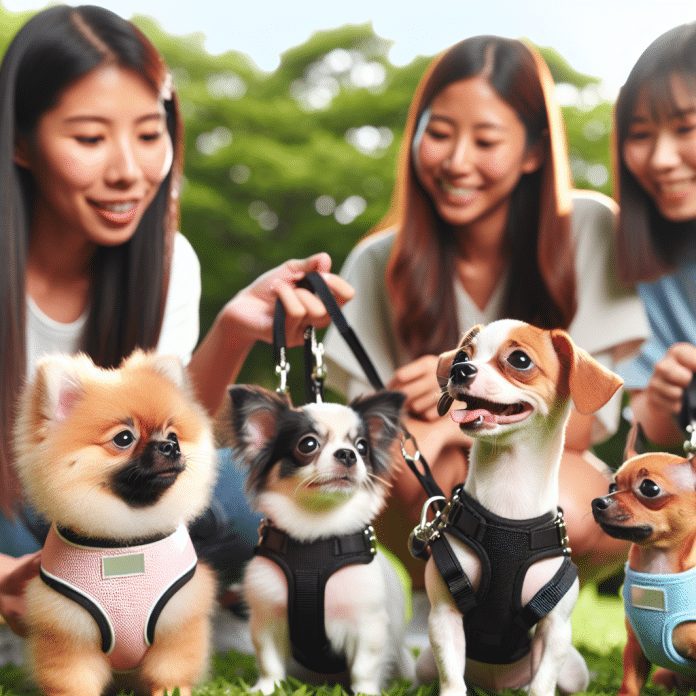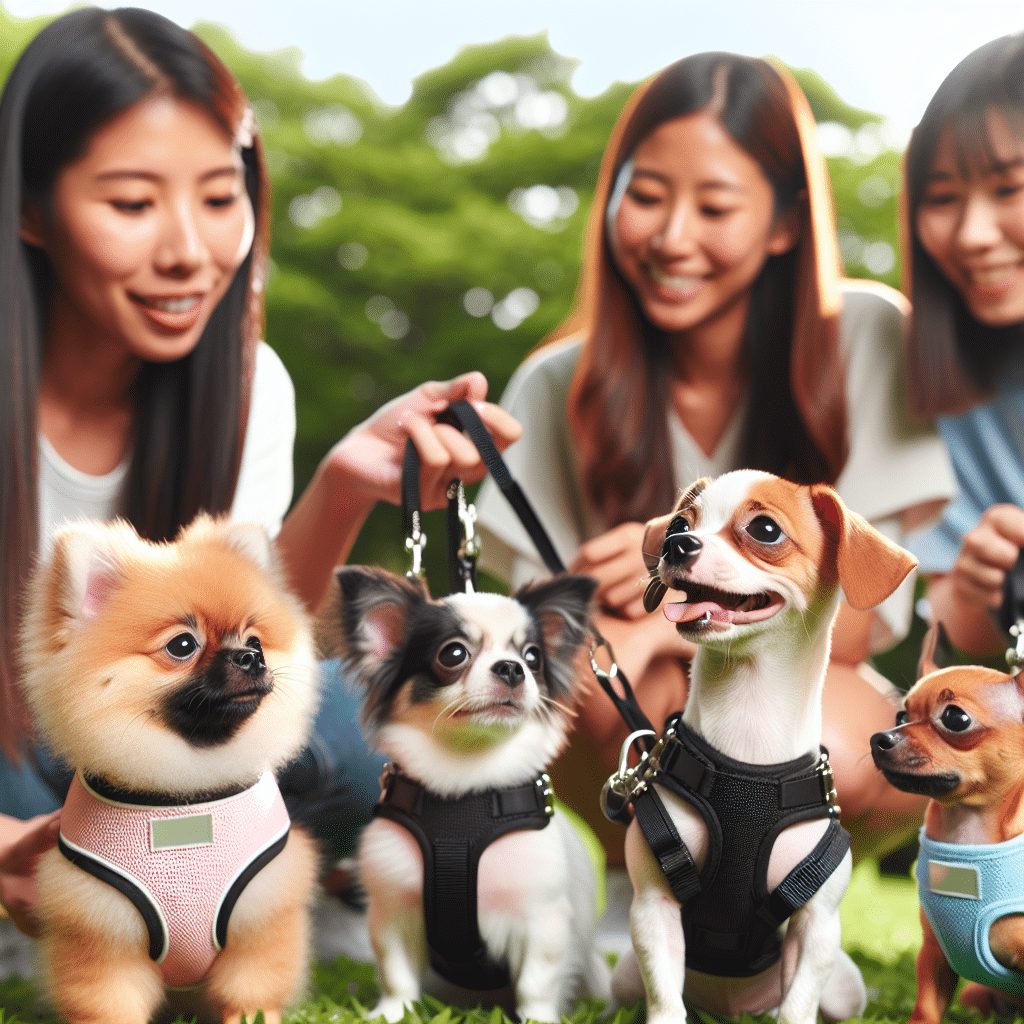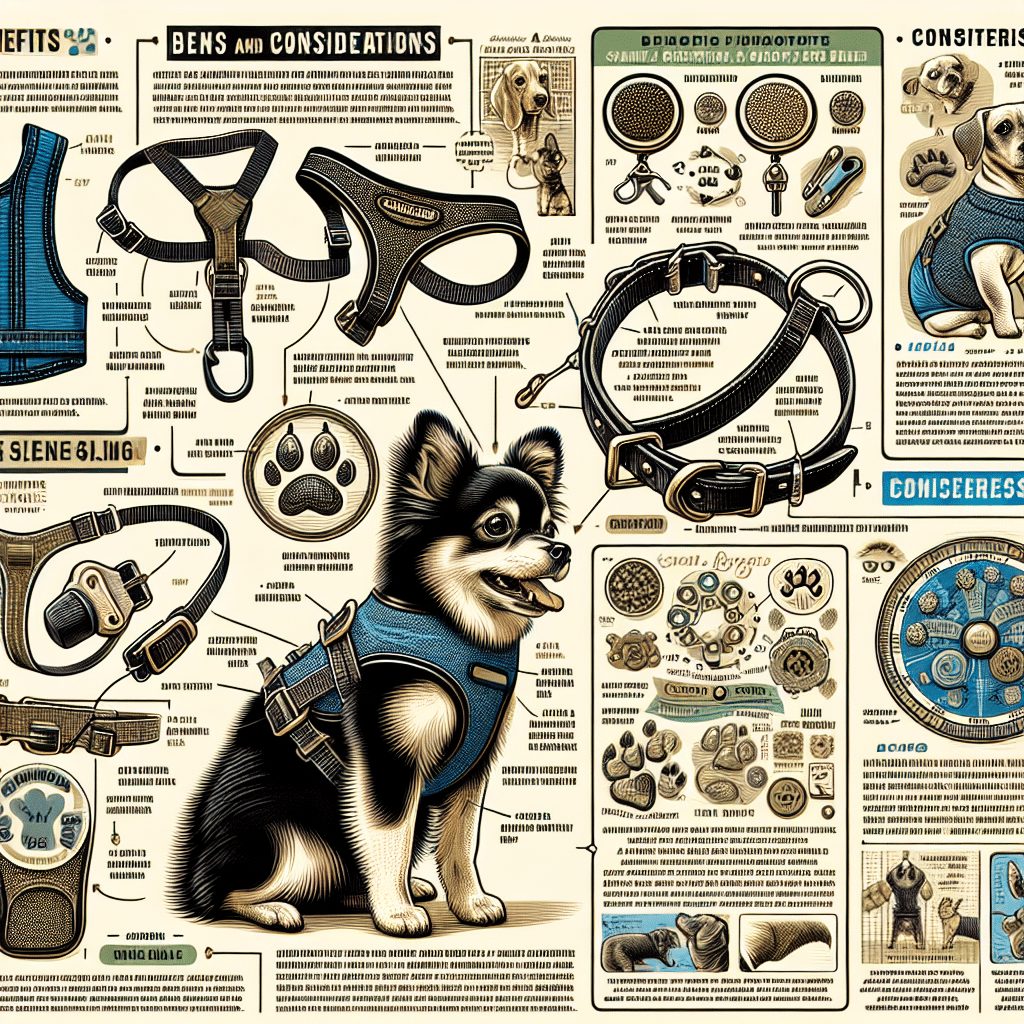If you have a small or toy breed dog, you may be wondering whether or not to invest in a harness. While traditional collars are commonly used, harnesses are becoming increasingly popular among pet owners. Harnesses offer a variety of benefits for small dogs, such as added control, reduced strain on their delicate necks, and improved safety. In this article, we will explore the reasons why a harness may be a worthwhile investment for your furry friend and provide useful tips for choosing the right one.
Pros of Using a Harness for Small or Toy Breed Dogs
Better Control and Safety
Using a harness for your small or toy breed dog provides better control and safety during walks. Unlike a collar, which can easily slip off or put pressure on the delicate throat and neck of these breeds, a harness distributes the force evenly across the chest and shoulders. This allows you to have more control over your dog’s movements and reduces the risk of injury.
Protection for Delicate Throat and Neck
Small and toy breed dogs, such as Chihuahuas or Yorkshire Terriers, have delicate throats and necks that are susceptible to injury. Regular use of a collar can put strain on these areas, leading to discomfort or even serious health issues. A harness eliminates the pressure on the throat and neck, providing a safer and more comfortable way to control your dog.
Prevention of Collar-Related Injuries
Collars can be a cause of injury for small or toy breed dogs. Their active nature and tendency to pull on the leash can put excessive strain on their necks, leading to injuries such as tracheal collapse, neck muscle strains, or even damage to the spinal cord. By using a harness, you can significantly reduce the risk of such injuries and ensure your dog’s well-being.
Suitable for Dogs with Respiratory Issues
Many small or toy breed dogs are prone to respiratory issues, such as collapsing trachea or brachycephalic airway syndrome. These conditions can make it difficult for them to breathe properly, especially when pulling against a collar. A harness ensures that the pressure is distributed across the chest instead of the throat, allowing for better airflow and minimizing respiratory distress.
Different Types of Harnesses
When it comes to choosing a harness for your small or toy breed dog, there are several options available. Each type has its own design and features that suit different dogs and their owners.
Step-In Harness
A step-in harness is one of the most common types used for small or toy breed dogs. It consists of two openings on the chest area where the dog’s front legs can be easily inserted. Once in place, you can secure the harness with buckles or Velcro straps around the dog’s back. This type of harness is easy to put on and take off, making it convenient for both the dog and the owner.
Wraparound Harness
A wraparound harness, also known as an H-style harness, wraps around the dog’s body, securing at the back with buckles or Velcro straps. This design provides a secure fit and evenly distributes pressure, making it a comfortable option for small or toy breed dogs. The wraparound style also prevents the harness from slipping off or shifting during walks.
Vest Harness
Vest harnesses are another popular choice for small or toy breed dogs. They have a similar design to the wraparound harness but feature a vest-like structure that covers more of the dog’s body. This type of harness provides additional support and stability, making it an excellent option for dogs with back problems or older dogs who need extra assistance.
Back-Clip Harness
A back-clip harness has the leash attachment point located on the back of the dog’s body. This type of harness is suitable for dogs who walk calmly by their owner’s side without pulling. It allows for unrestricted movement and provides a comfortable walking experience for small or toy breed dogs.
Front-Clip Harness
A front-clip harness, as the name suggests, has the leash attachment point located on the front of the dog’s body, usually around the chest area. This design helps to discourage pulling by redirecting the dog’s forward motion towards the side. Front-clip harnesses are particularly beneficial for small or toy breed dogs who have a tendency to pull on the leash, as it provides better control and minimizes their ability to lunge ahead.
Considerations When Choosing a Harness
Before purchasing a harness for your small or toy breed dog, it’s essential to consider several factors to ensure the best fit and functionality.
Size and Fit
Choosing the right size and fit is crucial when selecting a harness for your dog. Measure your dog’s chest girth and refer to the manufacturer’s sizing chart to determine the appropriate size. A well-fitting harness should be snug but not too tight, allowing room for comfortable movement.
Material and Durability
Look for harnesses made of high-quality materials that are both durable and lightweight. The material should be strong enough to withstand your dog’s activity level without causing discomfort or irritation. Additionally, consider the ease of cleaning and whether the fabric is breathable to prevent overheating.
Ease of Use
Consider how easy it is to put the harness on and take it off your dog. Buckles or Velcro closures should be secure yet easy to fasten. Some harnesses may have additional features like quick-release buckles or one-click closure systems for added convenience.
Adjustability
An adjustable harness allows you to customize the fit to your dog’s specific measurements. Look for harnesses with adjustable straps around the chest and neck to ensure a secure and comfortable fit. This feature is especially important for small or toy breed dogs who may have unique body shapes.
Reflective Features
Safety is paramount when walking your dog, especially in low-light conditions. Consider harnesses that have reflective stitching or reflective strips to enhance visibility and keep you and your dog safe during nighttime walks.
Training Your Small or Toy Breed Dog to Use a Harness
Introducing a harness to your small or toy breed dog requires patience, positive reinforcement, and a gradual approach.
Positive Reinforcement
Use treats, praise, and rewards to associate the harness with positive experiences. Start by showing your dog the harness and giving them treats for sniffing or interacting with it. Gradually progress to rewarding them for allowing you to touch or put the harness on them.
Gradual Introduction
Don’t rush the process of getting your dog accustomed to wearing a harness. Start by allowing them to wear it for short periods of time indoors, gradually increasing the duration as they become more comfortable. Pair this with positive reinforcement to make the experience enjoyable for your dog.
Patience and Consistency
Every dog learns at their own pace, so be patient and consistent with your training efforts. Praise your dog for wearing the harness and provide treats or rewards during walks to reinforce positive behavior. With time and practice, your small or toy breed dog will become more comfortable and associate the harness with enjoyable outdoor time.
Alternatives to Harnesses
While harnesses are generally recommended for small or toy breed dogs, there are alternative options available. However, it’s important to note that these alternatives may not provide the same level of safety, comfort, and control as a harness.
Collars
Collars are the most common alternative to harnesses. They are easy to use and suitable for dogs who are already well-trained and don’t pull on the leash. However, collars put direct pressure on the neck and throat, which can lead to injury or discomfort, particularly for small or toy breed dogs.
Choke Chains
Choke chains, also known as slip collars, are designed to tighten around the dog’s neck when they pull on the leash. While they can provide some level of control, they can also cause injury, especially for small or toy breed dogs with delicate necks. The use of choke chains is generally discouraged, as there are more humane options available.
Prong Collars
Prong collars, also referred to as pinch collars, have metal prongs that pinch the dog’s neck when pressure is applied. These collars are commonly used for training purposes but can cause harm, especially if not used properly. Prong collars are generally not recommended for small or toy breed dogs due to their delicate necks and the potential for injury.
Cautions and Safety Precautions
When using a harness for your small or toy breed dog, it’s important to follow certain cautions and safety precautions to ensure their well-being.
Avoiding Choking Hazards
Regularly inspect the harness for any signs of wear or damage, such as frayed straps or broken buckles. Small or toy breed dogs can be more prone to escaping or getting tangled in their harnesses, so ensure that the harness is properly secured and adjusted to prevent choking hazards.
Proper Fitting and Adjustment
Ensure that the harness fits your dog properly and is appropriately adjusted. A loose harness can allow for escape, while a too-tight harness can cause discomfort or restrict movement. Regularly check the fit and make any necessary adjustments to maintain a safe and comfortable fit for your dog.
Monitoring for Discomfort or Irritation
Pay attention to any signs of discomfort or irritation that your dog may exhibit while wearing a harness. This includes excessive scratching, rubbing against surfaces, or changes in behavior during walks. If you notice any of these signs, re-evaluate the fit and consider switching to a different harness style or material that will be more comfortable for your dog.
Frequently Asked Questions (FAQs)
Here are some common questions about using a harness for small or toy breed dogs:
Can I walk my small dog with just a collar?
While it is possible to walk a small dog with just a collar, using a harness is generally recommended for better control, safety, and comfort. Collars can put excessive pressure on the delicate throat and neck of small or toy breed dogs, leading to potential injuries or discomfort.
How do I measure my small dog for a harness?
To measure your small dog for a harness, use a flexible measuring tape to measure their chest girth. Start behind the front legs and wrap the tape around the widest part of the chest. Refer to the manufacturer’s sizing chart to determine the appropriate harness size based on these measurements.
Should I leave the harness on my dog all the time?
It is generally recommended to remove the harness when your dog is not on a walk or under supervision. Leaving the harness on for prolonged periods may lead to discomfort, skin irritation, or even friction sores. Regularly check your dog’s skin for any signs of irritation or pressure sores, and give them time to rest without the harness.
Conclusion
Using a harness for your small or toy breed dog offers numerous advantages, including better control and safety, protection for delicate throat and neck, prevention of collar-related injuries, and suitability for dogs with respiratory issues. When choosing a harness, consider the size and fit, material and durability, ease of use, adjustability, and reflective features. Proper training and positive reinforcement are key to introducing your dog to a harness, and always monitor for signs of discomfort or irritation. While there are alternative options such as collars, choke chains, or prong collars, using a harness is generally recommended for small or toy breed dogs. By following safety precautions and addressing frequently asked questions, you can ensure a comfortable and enjoyable walking experience for both you and your small or toy breed dog.











































